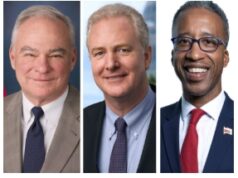An excellent column by Thomas Edsall in the New York Times presents an illuminating article by three political scientists, calling attention to a portion of the American electorate that is motivated by “a need for chaos.”
Those people who are “drawn to chaos” are identified by the authors of this study by their agreement with the following statements:
- I fantasize about a natural disaster wiping out most of humanity such that a small group of people can start all over
- I think society should be burned to the ground.
- When I think about our political and social institutions, I cannot help thinking “just let them all burn.”
- We cannot fix the problems in our social institutions, we need to tear them down and start over.
- Sometimes I just feel like destroying beautiful things.
Those statements affirmed by those “drawn to chaos” — “wiping out most of humanity,” “destroying beautiful things” — immediately brought to my mind what we’ve heard repeatedly about the state of mind of all these many perpetrators of mass killings whose horrific acts of murder and terror have been parading past us in recent times.
Just as an electorate that could elect this wrecking ball President was developing — tearing our social institutions down — so also has the frequency of mass shootings increased.
One might argue — rightly, and with clear evidence (as in the Pittsburgh synagogue shooting, and the El Paso killings) — that Trump’s incitement from the bully pulpit has helped to provoke such shooters.
But I expect that it is also true that both the rise of a chaos-needing Trump base and the creation of a growing number of men (it’s always men) eager to kill people at random are manifestations of the same reservoir of dark, nihilistic passions within the American culture.
(And indeed, the authors draw a variety of connections between this attraction to chaos and the rise of Trump– both how Trump’s rise to power was aided by those with a need for chaos, and how Trump feeds that same impulse.)
Which leads me to wonder whether a third element of human destruction in these times might also be connected: i.e. whether the much-discussed problem of “deaths of despair” might be another form in which that same cultural darkness is expressing itself.
Deaths of despair — a name given to the wave of deaths (especially in certain regions of America, which also tend to be Trump-supporting) from causes like suicide, drug overdose, and alcoholism — have been widespread enough to cause the life expectancy of Americans to decline for several years in a row.
One might consider all those deaths forms of suicide. And it has long been said that suicide and homicide are kindred acts, as for example in this statement:
suicide and homicide can be considered similar behaviors because in both cases an individual engages in killing someone, the only thing that differs is where the killing impulse is directed. Homicide is directed towards the external world, whereas suicide is aggression turned inward. When the cause of unhappiness can be attributed to an external source, the extreme response is rage and homicide. In the absence of an external source, the extreme response is likely to be depression and suicide.
And so many of these mass-killers end up — predictably — dead, that these massacres look like a combination of homicide and suicide (“suicide by cop”).
All of which raises the question: what is the source of these several dark developments– the President who constantly makes choices to make things more broken, the men who take military-style weapons into public places to massacre their fellow citizens, the individuals who choose paths of self-destruction?
The authors of the article — whose focus is only on the “need for chaos” and its connection with our current politics — place their emphasis on the rise of social media. These platforms “provide the public with unprecedented power to craft and share new information with each other.” (That word “craft” indicates how little the shared “information” needs to be tied to the truth.)
Surely there’s some truth in that. By creating the means for communities to form around bogus conspiracy theories and genuinely “fake news,” these new social media enable the impulse toward chaos and destruction to fortify itself with the power of contagion and the cohesion of the crowd.
But I expect this is a relatively minor part of the picture. The article seems to suggest that this impulse to destroy the world has been there all along, but only now is able to cohere enough to become powerful. I suspect that what has changed most dangerously is that the destructive impulse itself seized a greater hold on the American spirit.
If that’s so, it would make the important question, what has happened in America to give rise to people’s feeling such rage at the world, and such despair at the lives they’ve been able to find in that world.
The answers to such questions are often framed in terms of economic disappointments and hardship. And those are doubtless relevant to the issue.
But I suspect that something else — less materialistic in nature — lies at the heart of the matter. As for what that “something else” might be, I do not claim to know.




![[UPDATED with Jim Ryan’s Letter] In Response to Youngkin’s “Sad, Whiny” Letter to Spanberger About UVA, VA Senate Majority Leader Surovell Says He’s “truly embarrassed for Gov Youngkin…After 4 yrs he has no understanding of basic VA govt structure”](https://bluevirginia.us/wp-content/uploads/2025/11/youngkinspanuva3-238x178.jpg)








![[UPDATED with Jim Ryan’s Letter] In Response to Youngkin’s “Sad, Whiny” Letter to Spanberger About UVA, VA Senate Majority Leader Surovell Says He’s “truly embarrassed for Gov Youngkin…After 4 yrs he has no understanding of basic VA govt structure”](https://bluevirginia.us/wp-content/uploads/2025/11/youngkinspanuva3-100x75.jpg)